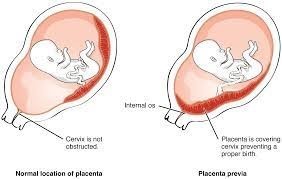A nurse is caring for a client who is in bed and begins experiencing a tonic-clonic seizure.
Which of the following actions should the nurse take?
- Lower the side rails of the bed when the seizure begins.
- Measure the duration of the seizure.
- Restrain the client's arms and legs to prevent injury.
Insert an oral airway into the client's mouth.
Lower the side rails of the bed when the seizure begins.
Measure the duration of the seizure.
Restrain the client's arms and legs to prevent injury.
Insert an oral airway into the client's mouth.
The Correct Answer is B
Lowering the side rails of the bed could lead to the client falling from the bed. Instead raise the side rails and place padding on them.
Measuring the seizure duration is a crucial step for medical evaluation afterwards necessary for determining intervention.
Inserting an oral airway into the client's mouth is not indicated during a tonic-clonic seizure. It is generally not recommended to place any objects or devices into the mouth of a person having a seizure, as it can potentially cause injury to the person or damage to the airway.

Nursing Test Bank
Naxlex Comprehensive Predictor Exams
Related Questions
Correct Answer is A
Explanation
Placenta previa is a condition where the placenta partially or completely covers the cervix, leading to vaginal bleeding. The bleeding is typically painless and bright red in color. This is an important finding that should be assessed and monitored closely.

A rigid abdomen is not a characteristic finding of placenta previa. It could be a sign of another condition such as placental abruption or uterine rupture, which are separate complications. Fetal movement is not directly related to placenta previa. It is a normal finding and can vary depending on the gestational age and individual fetal patterns.
Placenta previa is not typically associated with persistent uterine contractions. However, it is important to monitor for any signs of preterm labor or other complications that could cause uterine contractions.
Correct Answer is B
Explanation
- "Your health care surrogate will make decisions on your behalf if you are unable": This statement is correct. A health care surrogate, also known as a health care proxy or durable power of attorney for health care, is an individual designated by the client to make medical decisions on their behalf if they become unable to make decisions for themselves. It is important for the client to choose someone they trust and who understands their values and wishes.
- "You will need an attorney to appoint a health care surrogate": This statement is not necessarily true. While involving an attorney can be helpful, it is not always required to appoint a health care surrogate. In many jurisdictions, a legally valid health care surrogate designation can be made through a simple document or form provided by the hospital or a local government office. It is important to check the specific legal requirements in the client's jurisdiction.
- "You should appoint a family member as your health care surrogate": This statement is a subjective recommendation and may not be applicable to all individuals. The decision of whom to appoint as a health care surrogate should be based on the client's personal preferences and the individual's ability to make informed decisions according to the client's wishes. While a family member is often chosen, it is not a requirement, and the client may choose a close friend, partner, or anyone else they trust to fulfill this role.
- "Once you have completed a living will, it cannot be changed": This statement is incorrect. A living will, which is a type of advanced directive, can be changed or revoked at any time by the client as long as they are competent to do so. It is important for the client to review and update their living will periodically to ensure that it reflects their current wishes regarding medical care and treatment.
Whether you are a student looking to ace your exams or a practicing nurse seeking to enhance your expertise , our nursing education contents will empower you with the confidence and competence to make a difference in the lives of patients and become a respected leader in the healthcare field.
Visit Naxlex, invest in your future and unlock endless possibilities with our unparalleled nursing education contents today
Report Wrong Answer on the Current Question
Do you disagree with the answer? If yes, what is your expected answer? Explain.
Kindly be descriptive with the issue you are facing.
